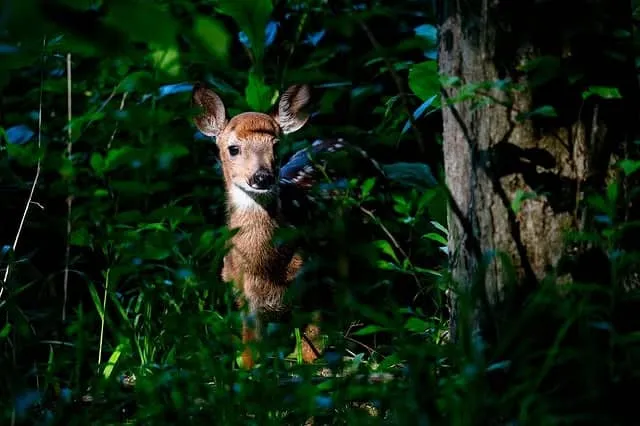The Jennings Environmental Education Center, Butler County, consists of 352 acres, and is managed by the Pennsylvania Department of Conservation and Natural Resources, Bureau of State Parks. Goals of the center are to protect the fragile natural ecosystems, manage the center's resources and educate the public in various aspects of ecological responsibility through environmental education and interpretive programming.
Environmental Education
The Jennings Environmental Education Center provides environmental education and interpretive programs which explore a wide variety of ecological and environmental topics. The Jennings Center provides college level students with practicum and internship experiences in environmental education, interpretation and resource management.
A visitor center contains displays, exhibits, and information on environmental issues and local natural resources. The center staff provides services and assistance in plant and animal identification, conducting and developing environmental programs and supplying information relative to environmental issues.
Natural History
The Jennings Environmental Education Center was established in the late 1950s by the Western Pennsylvania Conservancy, a non-profit land conservation agency, to protect and conserve a beautiful prairie flower, the blazing star, Liatris spicata. The center is named for Dr. Otto Emery Jennings, a famous botanist and naturalist who first discovered the blazing star prairie area.
This small relict prairie in the midst of the eastern deciduous forest, is one of the few remaining areas of a once greater eastward extension of the true prairie that stretched from the Rocky Mountains to the Appalachians.
How does an area that has been forested since the time of the Roman Empire still remain in prairie ecosystem? The answer lies hidden in the geological and botanical evolution of the Jennings area. During the last million years, four glacial periods or ice ages, have passed in series through Pennsylvania. From the oldest to most recent, they were the Nebraskan, Kansan, Illinoian and Wisconsin. The earlier glaciers covered the Jennings, reshaping the topography and scouring geologic deposits from the north.
About 14,000 years ago as the face of these great glacier caps began to melt, water impoundments created prehistoric lake basins. The fine silts, sand and clay particles settled from the water to form the glacial lake soils upon which the Jennings' prairie would become established.
In the thousands of years that followed, the climate changed back and forth, first warmer, then cooler until about 7,000 years ago when a warm dry period emerged that lasted nearly 3,000 years. It was during this time that a "prairie peninsula" extended the prairie plant community out of the Midwest into Western Pennsylvania establishing here about 2000 B.C.
Since that time, changing environmental conditions, most notably increased rainfall and cooler climates, have eliminated Pennsylvania's prairies, except for a few relict prairie sites such as Jennings. It is believed that the poor growth conditions present at the Jennings prairie area prohibited the establishment of forest growth. This permitted the plant community that previously existed to remain.
The Jennings area was the first "reserve" established in Pennsylvania to protect an individual plant species and remains the only public and protected relict prairie in the commonwealth.
Woodland Area and Trails
The Jennings Center also includes about 220 acres of woodland ecosystem which is more typical of the mixed hardwood forest of the area. Stream valleys and lowlands have many dead elm snags. These are remnants of the elm forests that existed prior to the blight of Dutch Elm Disease in the 1930s.
Return to
